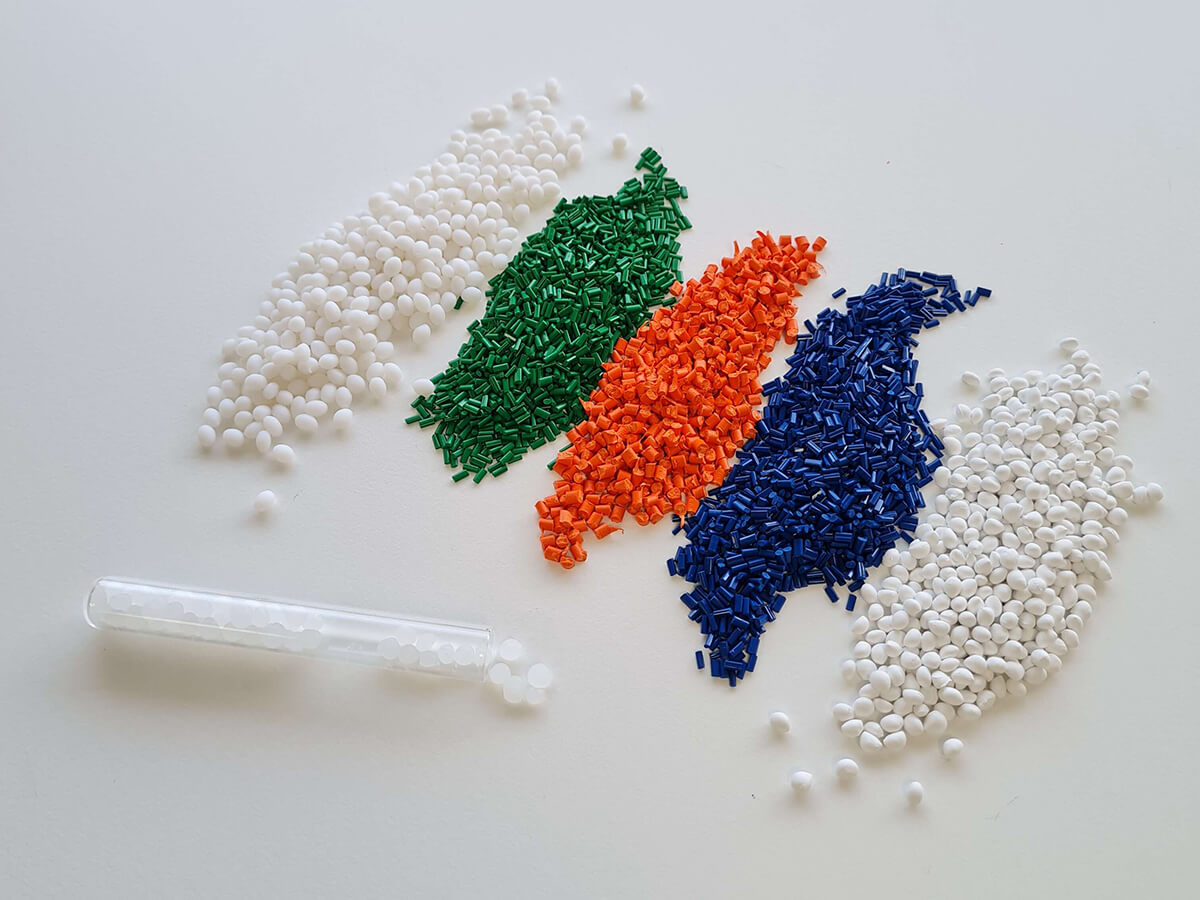
Sustainable plastics for different types of packaging
The development of new materials and products that are environmentally friendly is essential to achieve compliance with the Paris Climate Agreement. In this context, sustainable plastic solutions have appeared for different types of packaging to help us reduce the environmental impact we generate.
In order to achieve a more sustainable economy, it is necessary to move towards a development model which reduces the number of resources that must be used for production, as well as being able to efficiently manage the waste that these goods generate.
Sustainable plastics: what are they?
When we say that a plastic is sustainable, we are referring to materials developed to give rise to more environmentally friendly products. This can be understood from different points of view: they can be recycled plastics, biodegradable, compostable, etc.
Development of sustainable materials
Obtaining sustainable plastics involves a great deal of research work to develop materials that behave similarly to conventional plastics and are, at the same time, more environmentally friendly.
More sustainable materials are developed, for instance, incorporating recycling, or using bioplastics, which can be biodegradable, compostable or from renewable sources.
- If you want to know more about this, here is a post regarding the different types of bioplastics.
Why use sustainable plastics?
On December 2015, the European Commission adopted an action plan focused on achieving the EU a model based on the Circular Economy. With this plan, plastics were identified as a key priority and established that all plastic packaging must be recyclable by 2030.
Plastics in the Circular Economy
Plastic is a necessary material due to its wealth of benefits: it is durable, safe, economical… Nevertheless, its use in our model must be rethought in order to achieve the circular economy.
An example of how plastic contributes to the circular economy is when it comes to keeping food protected and safe. Thanks to this type of material, it is possible to ensure that products can be transported with less risk and, in addition, last longer in our refrigerators.
Sustainable plastics could become an answer to the challenge of sustainability and environmental health that lies ahead. Improving packaging designs, using more environmentally friendly materials and proper waste management can be essential to curbing the damage we are causing to the planet.
Which are the most sustainable plastics?
There are different types of sustainable plastics. Generally speaking, we can distinguish two main families of materials: recycled plastics and bioplastics.
Do you want to know how they differ and what are the main characteristics of these types of sustainable packaging? Continue reading!
Bioplastics
Bioplastics are an alternative to conventional plastics because they offer great environmental advantages in different aspects.
According to the European Bioplastics, a bioplastic is a plastic material that is bio-based, biodegradable or booth.
- Here is an article that many interesting to you about biodegradable materials.
This type of material has awakened great interest both in society, which results in the increased demand for biodegradable products and in the plastics industry, which has seen in this type of sustainable plastics an opportunity to comply with European regulations without having to change its manufacturing methods or machinery. This is because the technical properties of bioplastics are quite similar to those of conventional plastics.
This type of material has a wide range of application possibilities. And they have now found a niche in such important industries as packaging, food and pharmaceuticals.
Maniplastic, a company expert in processing conventional plastics, is an example of this. Together we started their transformation towards a production model with sustainable plastics. Our R&D team developed a tailor-made bioplastic specifically for their machinery, and we obtained a great result in the industrial manufacturing of thermoforming trays! Here is an ebook with all the information about the project:
Bioplastics are gaining market presence as more an more people see their environmental benefits and ease of application thanks to the fact that packaging manufacturers do not have to carry out new investments in machinery.
In brief, bioplastics have two major advantages: they are more environmentally friendly materials and have similar technical properties to conventional plastics.
Recycling
Recycled plastic also belongs to the group of sustainable plastics because it saves natural resources and consumes less energy compared to production processes using virgin raw materials.
Basically, the idea is to reuse waste to manufacture new products. This avoids consuming new resources and avoids the material having a single life cycle and re-entering the economic cycle. This way, we move from a linear life cycle to a circular life cycle.
Sustainable materials and plastics for food packaging
As previously mentioned, the packaging industry has developed sustainable materials. One of the sectors that have benefited most from these developments is the food industry.
The main objective is to find packaging that leads to the increase of the product’s shelf life and, at the same time, guarantees safe, high-quality transport and preservation. This type of packaging should not only reduce waste generation and avoid food waste, but also meet the demands of consumers who are increasingly sensitive to environmental conservation.
One of the main challenges of sustainable plastics for food is to achieve barrier packaging. To achieve this, the different laboratories of the materials industry continue to work on alternatives such as biodegradable, compostable, recycled, etc.
Extensive information can be found in these articles on bioplastics in food:
Some examples of sustainable materials for food packaging
Materials used in the food industry must meet much stricter criteria than those used in other industries. In other words, this is a sector with maximum innovation in materials.
One example is active packaging, which performs a specific function in addition to conventional packaging. This function can be to play an active role in the maintenance of the product or even to improve the quality of the packaged product.
Bio-based bioplastics are another example of alternative materials for food packaging. These are sustainable plastics because they are polymers that are extracted from nature. On the other hand, biodegradable plastics reduce the amount of waste we currently generate.
Another important role of sustainable plastics in the food industry is played by compostable plastics, which eventually biodegrade into compost, CO2 and water. This type of material is increasingly present on supermarket shelves. Its main applications are tableware (single-use plates and cutlery), coffee capsules, ready-to-eat food packaging, fruit and vegetable bags…
Advantages of sustainable plastics in packaging
We mentioned earlier that traditional plastic is a material that offers a host of benefits. It is a safe material which complies with the strictest international regulations, allows for a hygienic and safe food supply and is highly versatile as it can be adapted to a wide range of requirements.
However, these materials generate an amount of waste that is difficult to manage. Thus, recycling and bioplastics can play a very interesting role in becoming a sustainable alternative to conventional plastic.
Among others, the advantages of sustainable plastics are:
- Recycling helps reuse materials that have already become waste
- Biodegradable bioplastics do not pollute natural environments as they leave no trace of microplastics
- Compostable waste is much easier to manage as it has to be disposed of in the organic garbage bin to be treated in a composting plant, where it will eventually disappear and become natural substances
- Bio-based bioplastics come from natural sources, thus reducing dependence on petroleum
- They are materials with a longer life cycle, thus contributing to the circular economy
In essence, we are referring to sustainable plastics that are more environmentally friendly. And, taking into account climate change and the current situation of ecosystems, we encourage you to try new alternatives and do everything in your power to take care of our planet.










